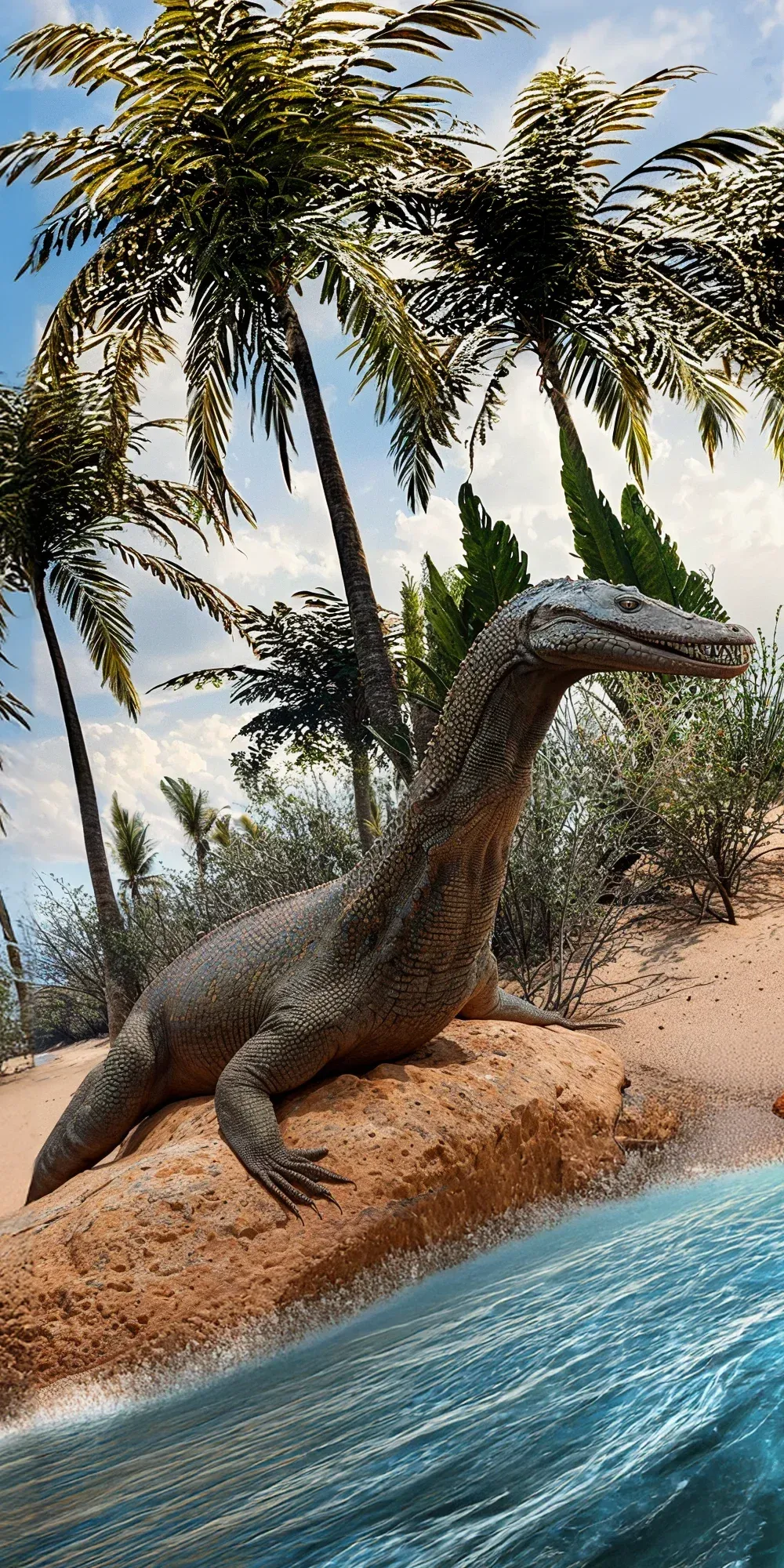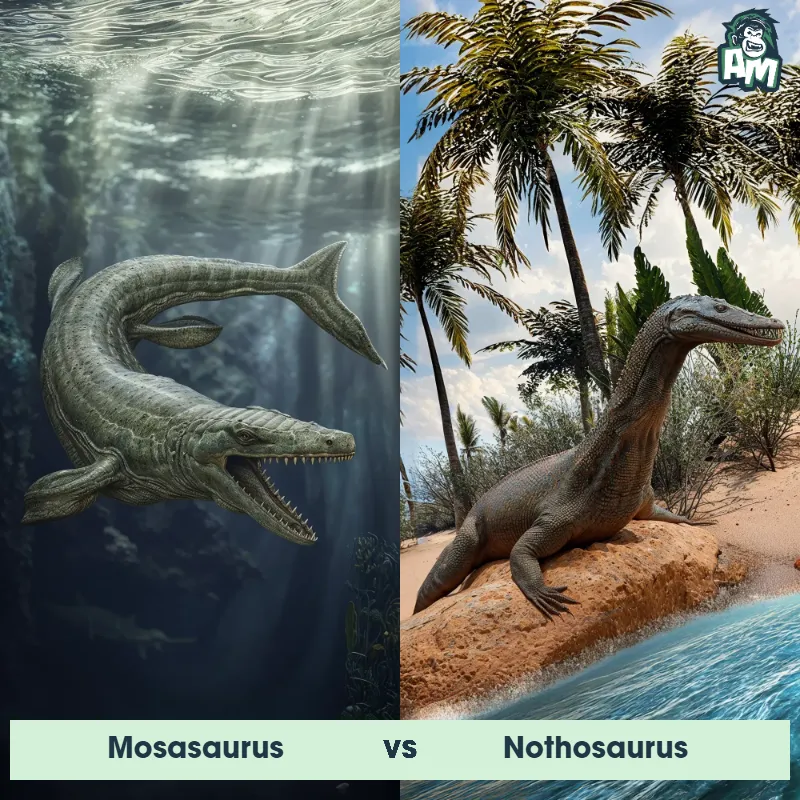The Nothosaurus
The Nothosaurus, commonly known as the "false lizard," was a marine reptile that lived during the Triassic period. It had a long, streamlined body with four paddle-like limbs, a pointed snout filled with sharp teeth, and eyes positioned high on its head for hunting in murky waters. Nothosaurus varied in size from 2 to 4 meters in length.

| Nothosaurus | |
|---|---|
| Size | Approx. 13 feet (4 meters) long |
| Weight | Approx. 660 pounds (300 kilograms) |
| Speed | 13-18 mph (21-29 km/h) |
| Key Strength | Sharp teeth and agile swimming |
| Biggest Weakness | Vulnerable on land |
| Scientific Name | Nothosaurus |
| Family | Nothosauridae |
| Habitat | Marine |
| Geography | Europe and China |
| Diet | Fish and other marine creatures |
| Lifespan | 30 years - 50 years |

The Nothosaurus
The Nothosaurus, commonly known as the "false lizard," was a marine reptile that lived during the Triassic period. It had a long, streamlined body with four paddle-like limbs, a pointed snout filled with sharp teeth, and eyes positioned high on its head for hunting in murky waters. Nothosaurus varied in size from 2 to 4 meters in length.
Fun Fact: Nothosaurus had a unique method of reproduction where females would give birth to live young rather than laying eggs like most reptiles.
| Nothosaurus | |
|---|---|
| Size | Approx. 13 feet (4 meters) long |
| Weight | Approx. 660 pounds (300 kilograms) |
| Speed | 13-18 mph (21-29 km/h) |
| Key Strength | Sharp teeth and agile swimming |
| Biggest Weakness | Vulnerable on land |
| Scientific Name | Nothosaurus |
| Family | Nothosauridae |
| Habitat | Marine |
| Geography | Europe and China |
| Diet | Fish and other marine creatures |
| Lifespan | 30 years - 50 years |
Nothosaurus Matchups
We use AI to simulate matchups between the Nothosaurus and other animals. Our simulation considers size, strength, and natural predatory behaviors to determine the most likely outcome.

Can't find the Matchup you want?
Create Your Own MatchupNothosaurus: Diet, Predators, Aggression, and Defensive Behaviors
What did Nothosaurus eat?
Nothosaurus were carnivorous reptiles that primarily fed on fish and other small aquatic animals. They had long, sharp teeth adapted for catching and gripping slippery prey in the water.
Did Nothosaurus have any predators?
As apex predators of their environment, adult Nothosaurus did not have any natural predators. However, young or injured Nothosaurus may have been vulnerable to larger marine predators such as giant sea reptiles.
Were Nothosaurus aggressive?
Nothosaurus were not typically aggressive towards other creatures unless they felt threatened or were fighting for territory or food. They were known to be solitary animals and did not engage in aggressive behaviors unnecessarily.
Did Nothosaurus fight?
Nothosaurus were territorial animals and would defend their feeding and breeding grounds from other individuals, especially during mating seasons. They would engage in fights to establish dominance and secure their territory.
How did Nothosaurus defend themselves?
Nothosaurus used their speed and agility in the water to evade potential threats. They could also use their sharp teeth and powerful jaws to defend themselves if necessary, biting and thrashing at attackers to deter them.
What was the biggest weakness of Nothosaurus in a fight?
Despite their speed and agility in water, Nothosaurus were vulnerable on land. Their limbs were adapted for swimming rather than walking, making them less effective at moving on land. This weakness could be exploited by terrestrial predators or rivals during confrontations.
Fun Fact: Unlike other marine reptiles of its time, Nothosaurus was not a fast swimmer but was more adept at maneuvering and hunting in shallow coastal waters.
Fun Fact: The name "Nothosaurus" means "false lizard" because when the first fossil remains were discovered, they were initially mistaken for a type of marine lizard.











